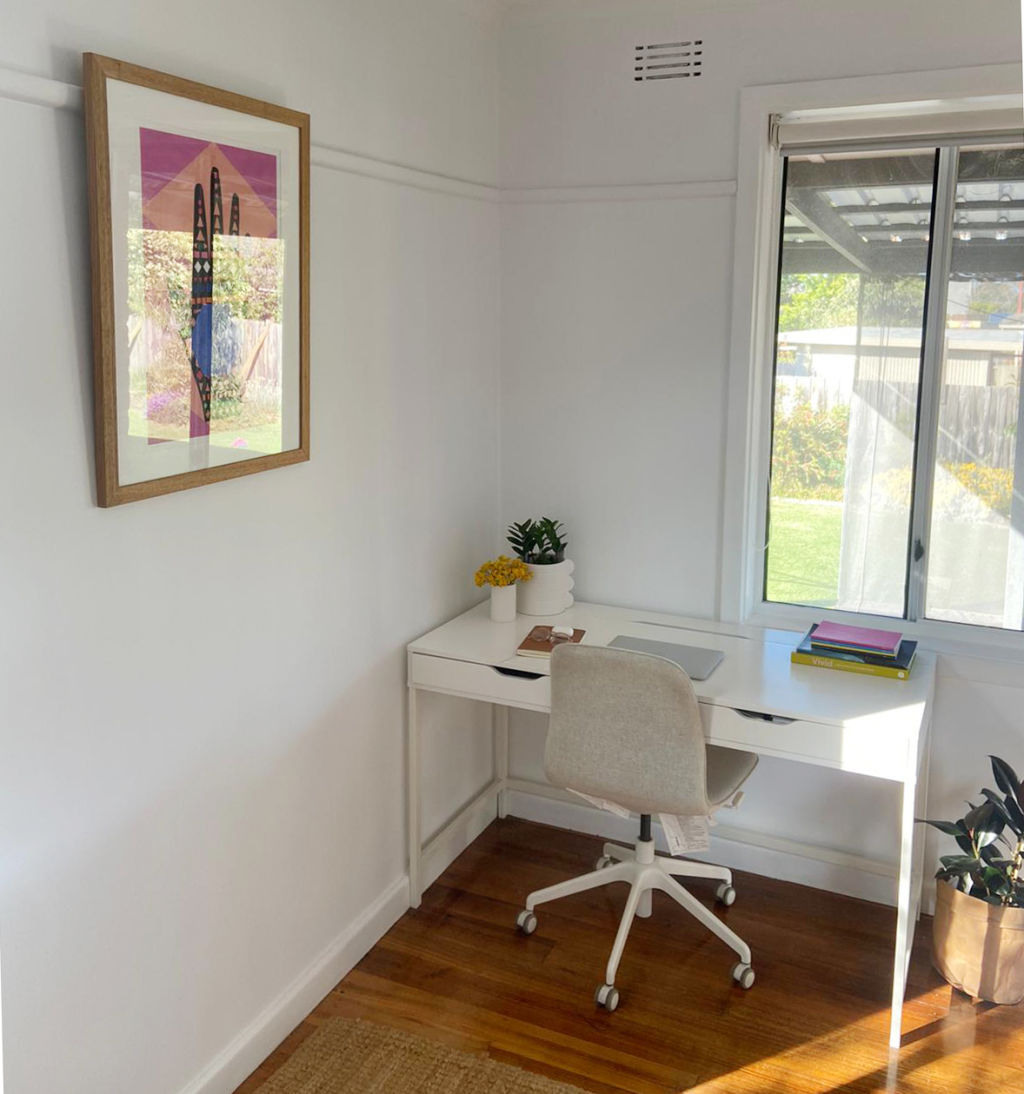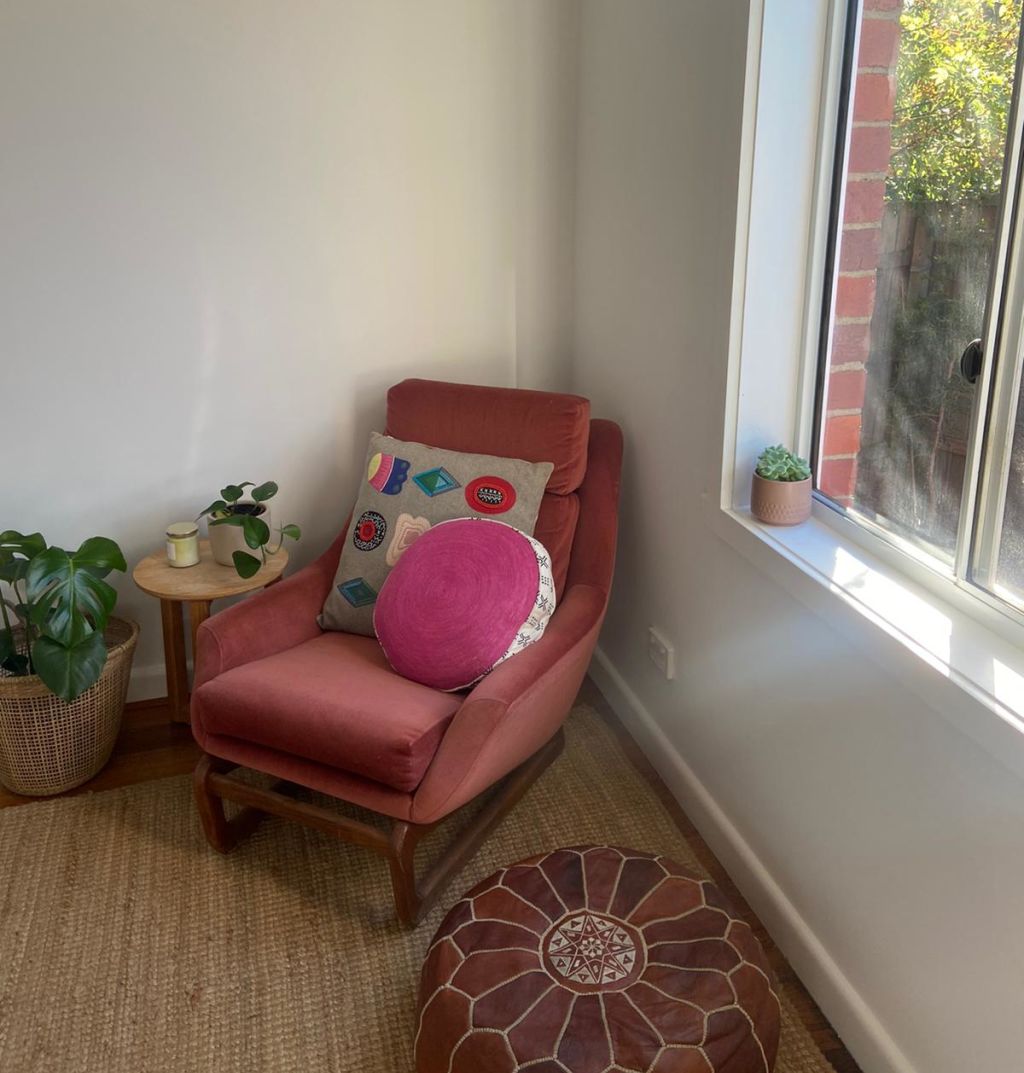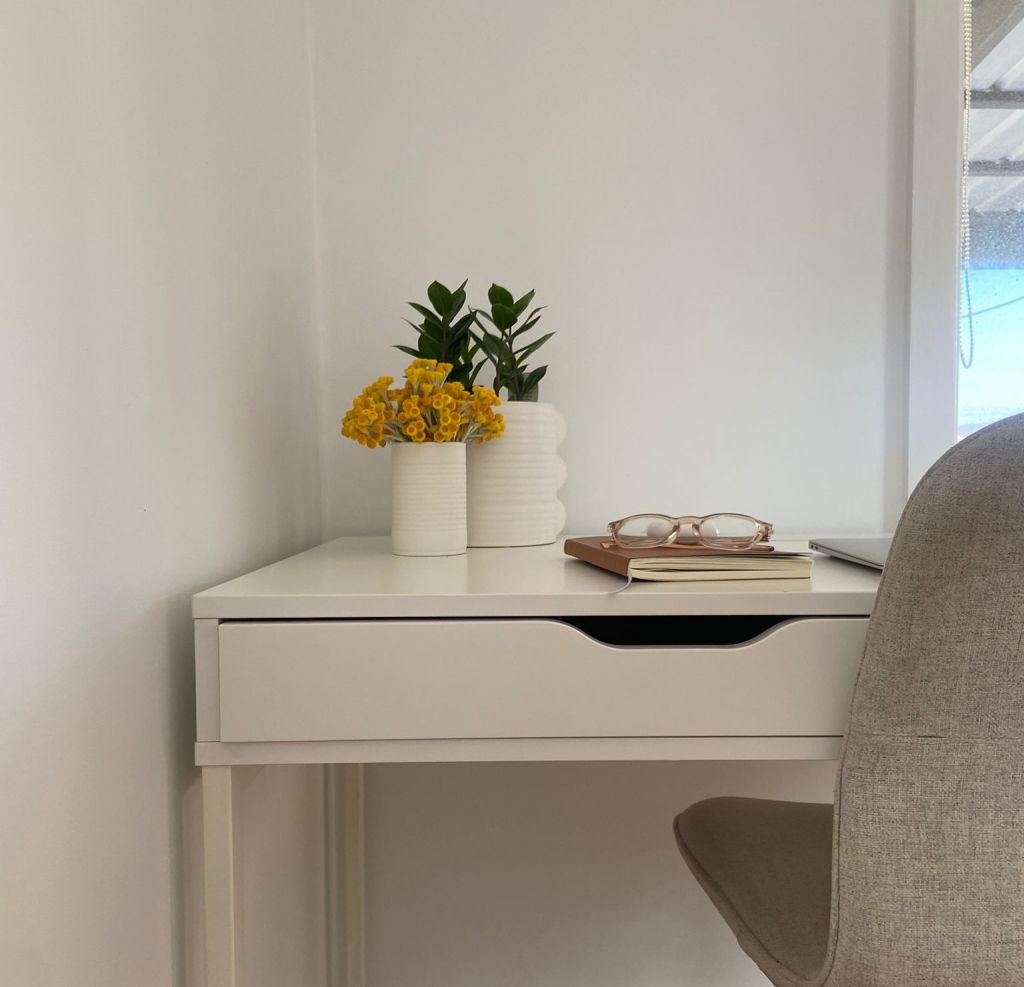One of the biggest lifestyle shifts and legacies to emerge from the pandemic is that so many more of us now work from home – and researchers say that’s going to continue well into the future.
Designers tell us that almost all clients are now requesting home offices in new builds and renovations (pre-COVID, not so much) and that the inclusion of an office increases a home’s resale value.
For Erin Morris, who runs the marketing agency Young Folks Digital and divides her time between a home office and an external one, a designated home workspace enables creativity and efficiency and creates a boundary between work and home.
“Having a room dedicated to that space definitely helps,” she says. “And whether it’s a door you walk through, or a ritual, a physical shift to mark the commencement of work helps with productivity and also feeling engaged in the work.”

For Morris, that involves a morning and evening “commute walk” around the block to decompress and transition in and out of work mode.
Morris has had an office at home since 2017. Her office features not just an ergonomic chair and desk but also a comfy armchair accompanied by a side table and floor cushion for when she’s reading or taking calls.
She says the key to a successful working-from-home space is to create different zones – not just within your home, but within the workspace itself – for when you need to switch to a different kind of activity.
Keep track of expenses
Many of the items you purchase for your home workspace can be claimed at tax time, including things like stationery, electronics and furniture. As a small business owner, Morris’s tip is to use accounting software like Xero to capture and keep track of all your expenses. This also fits perfectly with her “paperless” approach to the office.
“We’re a paperless business so using Xero, a cloud-based accounting platform, means I don’t need to keep receipts all over my desk, which just brings me so much joy,” she says.
“I used to use a different system [where I would] bring receipts home, photograph them and mail them to my book-keeper and then file them somewhere. Now I literally snap a receipt and it goes straight into Xero.”

Embrace colour and nature
In terms of home-office trends, interior stylist Emma Blomfield says the shift away from all-white spaces is now carrying through to working-from-home spaces – people want workspaces that feel inviting and not so sterile.
“A good way to do that is with the use of colour,” Blomfield says. “A lot of terracotta colours, citrus colours like oranges and yellows, variations of sand and beige and taupe, and warmer greys.”
For Caitlin Marshall from Project 5 Interior Design, natural timber, greenery and lamps are essential for “warming up” a home office.
“I also like to introduce an oil burner just to get some [scents] happening, and a calm space,” she says. “A bit of music, and some fresh air and natural light. Working under artificial light, personally, I really struggle with.”

Morris says that having windows in her office keeps her energised and inspired, plus it’s good for eye health.
“There are two windows in the room that I work in and I often change the position of the desk to be in front of a different window if I’m wanting a different view,” she says. “My optometrist actually said you should look up from your work and look at a long distance… every hour to give your eyes a little break from being so focused.”
Consider ergonomics and acoustics
On that note, it’s hugely important to consider ergonomics when setting up your home office. While investing in ergonomic pieces might seem boring, there’s nothing fun about earning yourself a stiff neck and shoulders from an aesthetically pleasing yet uncomfortable workspace.
“You know the old saying, form over function or function over form?” Marshall says. “For something that you’re sitting in for eight hours, I’d definitely recommend spending the money on a chair.”
Morris says she set herself up with an ergonomically sound computer monitor, laptop stand, mouse and cables for around $500.
As well as nailing the aesthetics, Marshall and Blomfield both highlight the importance of acoustics. Marshall is a big fan of installing acoustic panelling behind the computer to absorb sound – especially since many of her clients are sharing their home workspace with their partners or children.

Blomfield uses soft furnishings for this purpose.
“I’ve got wooden floors and I put a really big rug down because I’m on the phone a lot or I’m doing webinars and speaking on camera, so it needs to be something that absorbs the sound, because most of the furniture that you place in a home office is a hard surface,” she says.
Ultimately, your working-from-home set-up needs to feel good and function in a way that suits you because, as Blomfield says, “we probably will be working from home a lot more than before”.
article by domain.com.au
